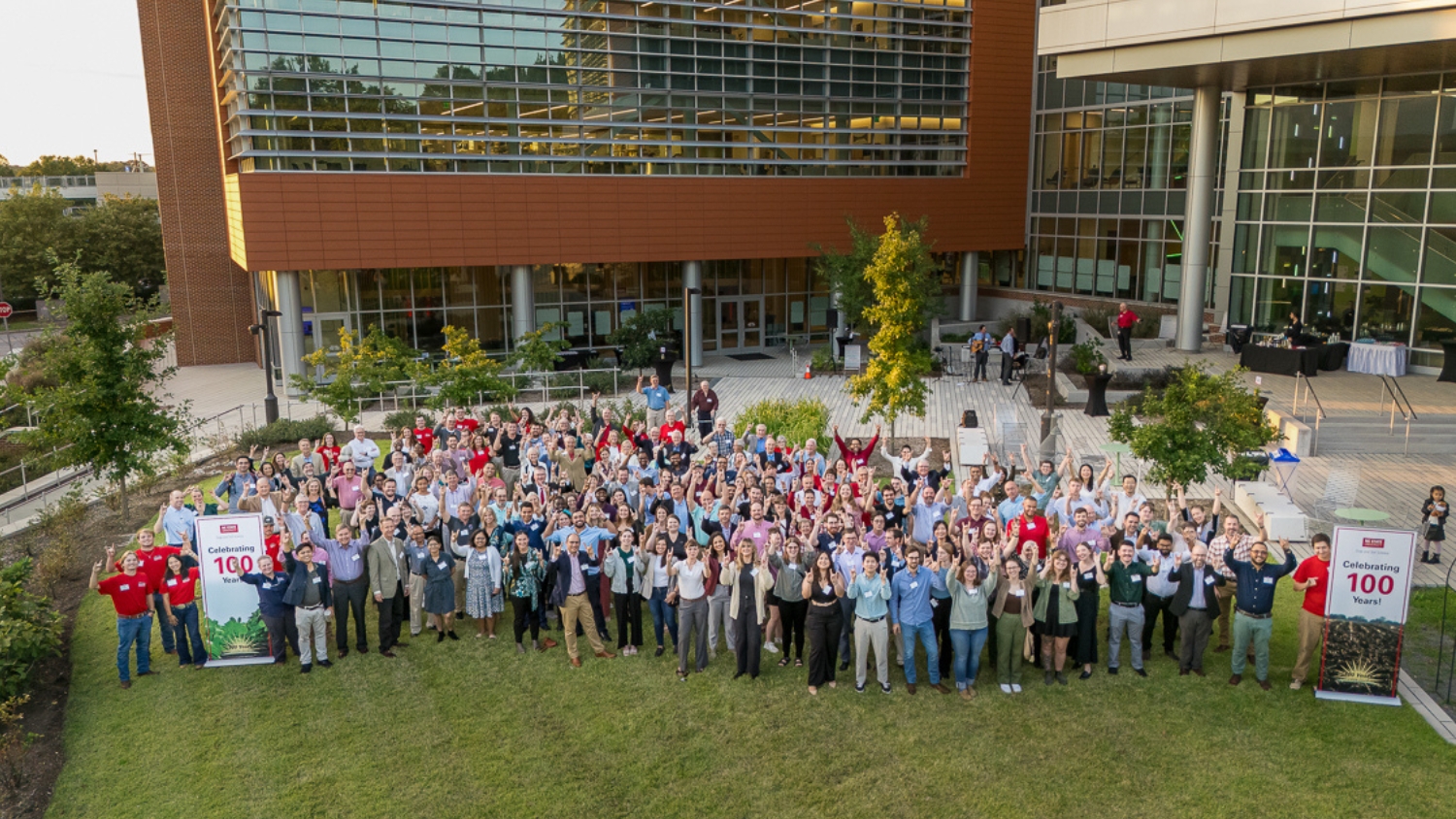Goodnight Irene: Dealing with storm damage at Pamlico field lab
Hundreds of thousands of North Carolinians, particularly those who live in the state’s Coastal Plain, held their collective breath as Hurricane Irene spun through the state in late August. But it’s probably a safe bet no one in North Carolina watched the storm with any more apprehension than Dr. Craig Sullivan.
Sullivan, William Neal Reynolds Professor of Biology, was safe in Raleigh as Irene headed up the East Coast. But on the coast, in the path of the storm, was 20 years of Sullivan’s life, indeed, the vast majority of his professional life.
Sullivan’s career has been distinguished by his work with hybrid striped bass. Hybrid striped bass represent a significant segment of American aquaculture today largely because Sullivan developed techniques to keep striped bass in captivity and to breed striped and white bass to produce hybrids. The hybrids are hardier than either striped or white bass and thus, better aquacultural candidates. Sullivan also spent the better part of the last 20 years selectively breeding striped and white bass to create the best brood stock possible from which to develop hybrids.

The fish with which Sullivan works are at the Pamlico Aquaculture Field Laboratory, which occupies 150 acres of an area called Hickory Point near Aurora. Hickory Point is surrounded on three sides by water, the Pamlico River, South Creek and Pamlico Sound. It is home to thousands of striped and white bass, from relatively small yearlings to older fish that typically weigh well over 10 pounds. Sullivan calls the field lab “the center of the striped bass universe.”
While the field lab has 16 quarter-acre ponds, the fish are kept in above-ground tanks, either 10 or 24 feet in diameter. Younger, smaller fish occupy the 10-foot tanks, while larger fish are kept in the 24-foot tanks.

Sullivan said Dr. Andy McGinty, field lab superintendent, research technicians Mike Hopper and Brad Ring, and James Stallings, a local resident who works at the field lab part-time, did as much as they could to ready the field lab for a direct hit from Irene. They moved some smaller fish to aquaculture farms in the area and stationed equipment on pond dikes, the highest points in the area. But there was nothing they could do for the larger fish in the larger tanks.
When Irene spun through the area, it sent a storm surge over the field lab, submerging the area in a flood roughly 8 feet deep. Water rose a foot or more over the tanks, Sullivan said. The area experienced some of the worst flooding in North Carolina. Sullivan said there are perhaps 200 homes in the area, and most sustained flood damage that left them uninhabitable.
James Stallings called Sullivan as Irene moved through the area. Stallings’ home is raised well above ground level, yet when he called Sullivan, he said the water was only a foot or two from entering his home and was rising as a rate of a foot every 15 minutes. The surge stopped and the water began to recede just before entering Stallings’ home.
Many of Sullivan’s fish were also spared. While the storm surge more than topped the larger tanks, Sullivan said the fish remained in the tanks.
“I really think they just didn’t want to leave,” Sullivan said of the fish. “I think that roiled up river water probably smelled bad and tasted bad to them.” The fish apparently hunkered down in the bottom of their home tanks and rode out the storm.

But the smaller tanks did not fare as well. Several of these tanks were damaged, and Sullivan said tens of thousands of fish, 80 to 90 percent of the yearling class, in the tanks were lost.
In addition to tanks and ponds, the field lab contains a number of small and large buildings, and most of these sustained significant flood damage. A dormitory was a total loss.
“Initially, it was a horrifying scene,” Sullivan said of the morning after the storm. And, in fact, the aftermath of the storm held as much peril for the fish as the storm itself. All the tanks are aerated by pumping water from two wells on the property into them. The storm surge took out power and washed out the road to the field lab. Without aeration, the oxygen in the tanks was not sufficient to support the fish.

Sullivan credited the tireless work of McGinty, Hopper and Stallings, his students and a four-man crew from the Lake Wheeler Road Field Laboratory in Raleigh with getting the Pamlico Field Lab back on line in time to save the fish.
Sullivan said Hopper and Stallings were at the field lab at 9 a.m. the morning after the storm, and McGinty arrived shortly thereafter. Hopper, who lives in Washington, had loaded his truck with a jon boat, chain saws, bicycle and other gear and headed for the field lab. The bike was a prescient addition. The road to the field lab was all but wiped out, with the exception of a narrow track wide enough for a bicycle. Hopper parked his truck and rode the bike to the lab. The first order of business was to move smaller fish from the small tanks, which had been damaged by the storm, to the nearby ponds.
Fortunately, PCS Phosphate, which operates a large phosphate mine in the area, quickly built a new road into the field lab. Sullivan was able to drive to the field lab the day after the storm, as was a crew from Lake Wheeler.

The Lake Wheeler crew, led by Richard Currin, facilities agricultural engineer, brought with them a 30 kilowatt surplus military generator. Sullivan said the Lake Wheeler road group, which included Ray Kavaliuauskas, Angel Cortez-Rodreguies and Aaron Moore in addition to Currin, arrived late in the afternoon the day after the storm.
But restoring power wasn’t a matter of cranking up the generator and inserting a plug in a socket. Sullivan said it was close to midnight before power was finally restored. He estimated that if the field lab had been without power for five more hours, all the fish in the larger tanks would have died.
The restoration of power averted a potential disaster but was just the beginning of efforts to keep the field lab operational. Sullivan moved into a tent at the site, while the Lake Wheeler Road crew spent long days at the field lab, driving back to Raleigh in the middle of the night only to return the next morning. Sullivan’s students also worked to keep the field lab functioning.
During the days after the storm, generators were the only source of power, and they had to be continually refueled with diesel fuel. A second 60 kilowatt generator was eventually moved to the site.

Sullivan said mosquitoes were a particular problem in the days after the storm. At times, he said, it appeared the people working at the field lab were wearing dark sweaters they were so covered with mosquitoes.
Sullivan estimates damage to the field lab at $250,000, and there is still much to repair. But most of the fish survived, and the field lab is still functioning, thanks to the efforts of field lab employees and students.
“These guys,” says Sullivan. “These UFL (University Field Lab) guys and James Stallings, Mike and Andy, Richard Currin and his crew, my students; I was never more proud to play on NCSU’s team.”
Written by: Dave Caldwell, 919-513-3127 or dave_caldwell@ncsu.edu


